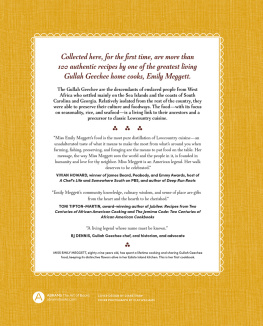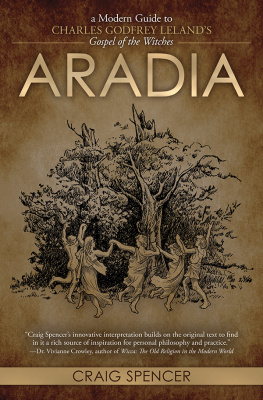Published by The History Press
Charleston, SC 29403
www.historypress.net
Copyright 2008 by Charles Spencer
All rights reserved
Front cover image: Painting by Cecil B. Wescott, courtesy of William H. Lawson.
First published 2008
Second printing 2008
Third printing 2011
Fourth printing 2011
Fifth printing 2012
e-book edition 2013
Manufactured in the United States
ISBN 978.1.62584.457.6
Library of Congress Cataloging-in-Publication Data
Spencer, Charles (Charles Sackett), 1938-
Edisto Island, 1861 to 2006 : ruin, recovery and rebirth / Charles Spencer.
p. cm.
Includes bibliographical references and index.
print edition ISBN-13: 978-1-59629-185-0 (alk. paper)
1. Edisto Island (S.C.)--History. 2. Edisto Island (S.C.)--History--Pictorial works. 3. Natural history--South Carolina--Edisto Island. 4. Plantation life--South Carolina--Edisto Island--History. 5. Edisto Island (S.C.)--Social life and customs. 6. Edisto Island (S.C.)--Race relations. I. Title.
F277.B3S67 2007
975.791--dc22
2007044281
Notice: The information in this book is true and complete to the best of our knowledge. It is offered without guarantee on the part of the author or The History Press. The author and The History Press disclaim all liability in connection with the use of this book.
All rights reserved. No part of this book may be reproduced or transmitted in any form whatsoever without prior written permission from the publisher except in the case of brief quotations embodied in critical articles and reviews.
PREFACE
One book or another about Edisto Island has been writing itself in the back of my mind for at least thirty years, while I labored in Washington and traveled on five continents on the taxpayers business. For me, Edisto is that place that each of us holds as an anchor deep inside, the place ones thoughts return to at odd moments in Cairo, Quito or Anaheim, as if to reassure oneself that this, too, shall pass, that youll get through it somehow, and some things will always be there, will never change. (Would it were so.)
The opportunity and the need for this book came together in a conversation with Sheila Beardsley, founding curator of the Edisto Island Historic Preservation Society (EIHPS), on Edisto Beach in 2000. I recognized my opportunity because my familys nest was empty, as a retiree my time was my own and I no longer needed to work for a living. Sheila talked about the serious need for a full-length, documented history of the island and the beach. For some time she had been on the lookout for a qualified researcher, perhaps a graduate student, who would write the book and get a thesis out of it. Would I help her find such a person?
Well, did she think I could do it? Of course, she thought I could do it. And the rest is (you guessed it) history.
The intellectual and financial sponsorship of this project by EIHPS were critical. The society recruited volunteer researchers, opened private archives and enlisted the help of scholars and librarians who expedited the work. Large sums of the societys money, contributed by enthusiastic members and friends, reimbursed me for out-of-pocket research expenses I never could have afforded otherwise. I am very grateful for this help, and I deeply regret the frustration I caused successive presidents and staff of EIHPS as the projects completion stretched on from three years, to four, to five and now to six. I can only plead good intentions and inexperience, never before having undertaken a book-length project for publication. I hope the result will serve the purposes that Sheila first had in mind.
From the outset I made clear that any history I wrote would deal explicitly and frankly with slavery and racism; this was not going to be just about the plantation owners. I intended to relate, as factually as I could, the story of all communities whose history is inextricably intertwined on our beloved island. EIHPS, to its credit, said it would have it no other way. I have worked hard to do that. I hope that both white and African American Edistonians, their descendants and their friends and relatives in the Edisto diaspora will find here a deeper understanding of their shared history, a deeper appreciation of the unique contributions of each community to the fragile fabric we call Edisto. I am more convinced than ever that each community has produced admirable legacies, remarkable leaders, courageous heroes and creative men and women who deserve our respect. As one reminder of the huge disparity between the power and wealth of the white and black races on Edisto during much of its history, the term Golden Age always appears in quotation marks in this book.
This book, as it happens, turned out to be two books. My manuscript (essentially finished in January 2005) was far longer than any commercial or academic publisher would normally issue for what is, after all, a local history. Would I be willing to cut it down almost by half? I would not. I was tired of working on it by then, and the full manuscript satisfied my obligation to EIHPS. I was ready to give up on publication and get my life back. Then The History Press generously offered to publish it in two volumes, and here it is. I am very grateful to them for that decision. Without The History Press, this book very likely would not have found an audience larger than those who already were acquainted with Edisto Island and familiar with EIHPS.
Even with two volumes, a large chunk of my research did not fit. I transcribed several long sets of documents about Edisto Island and her people, African American and white, that I thought would be useful to readers who wanted to pursue further research on a specific family, place or event. I carefully edited and reformatted several other document sets, already transcribed by others, to maximize their accuracy and accessibility and to supply context and identifications. All these original documents, some 150 pages in all, I hoped to append to these books. But we had to leave them out to hold the books to a commercially viable length. Instead, EIHPS has arranged to issue those supplemental papers as a separate volume called Documents on Edisto Island History. It will be available in printed or digital format. For further information, visit the EIHPS website, www.edistomuseum.com, or write to them at 8123 Chisolm Plantation Road, Edisto Island, SC 29438.
This book disappoints me in one major respect. The African American community on Edisto Island does not make a significant enough appearance in my book, especially in the twentieth-century chapters. I believe I have discovered and used enough published and archival material on Edistos African Americans in the eighteenth and nineteenth centuries to begin to make their experience come alive for those who do not share their history and to try to balance the treatment of the white community up to about 1900. To continue to build that balance through the twentieth century would have required extensive interviews with African American family historians and community leaders living today. That did not happen. I think I understand why. Still, it is a serious shortcoming of this book, which is most evident in volume two. The African American families and their lives on Edisto Island, especially in the twentieth century, is a story yet to be told systematically and in depth. I sincerely hope that someone will take up the task soon. We all need to hear it.








